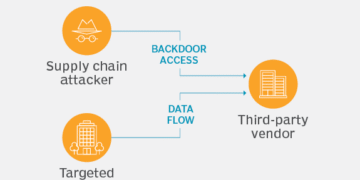Maximizing Efficiency: Understanding the Capacity Utilization Formula
Are you looking to unlock the full potential of your business operations? Understanding and maximizing capacity utilization is the key to efficiency and growth. Dive into this comprehensive guide on the capacity utilization formula, and discover how optimizing your resources can propel your business to new heights!
What is Capacity Utilization?
Capacity utilization refers to the extent to which a business is using its resources effectively. It measures the ratio between actual output and potential output, showcasing how efficiently a company is operating. By analyzing capacity utilization, businesses can gain insights into their production efficiency and identify areas for improvement.

This metric helps organizations evaluate their performance in utilizing labor, equipment, and other assets to meet market demand. A high capacity utilization indicates that resources are being fully utilized, maximizing productivity and profitability. On the other hand, low capacity utilization suggests inefficiencies or underutilization of resources that may lead to missed opportunities or increased costs.
Understanding capacity utilization is essential for businesses looking to streamline operations and enhance overall performance. It serves as a critical indicator of operational effectiveness and plays a significant role in strategic decision-making processes within an organization.
Why is it Important for Businesses?
Capacity utilization is a crucial metric for businesses as it directly impacts their profitability and competitiveness in the market. By understanding how efficiently resources are being utilized, companies can identify areas of improvement and optimize their operations to meet demand effectively.
Maintaining an optimal level of capacity utilization ensures that a business is not underutilizing its resources, leading to wasted potential and increased costs. On the other hand, overutilization can result in bottlenecks, decreased quality, and higher lead times.
For businesses striving for growth and success, monitoring and managing capacity utilization is key to meeting customer demands promptly while maximizing revenue generation. It allows organizations to make informed decisions regarding resource allocation, production planning, and overall operational efficiency.
In today’s dynamic business environment where competition is fierce and consumer expectations are high, staying on top of capacity utilization helps companies stay agile and responsive to market changes.
The Capacity Utilization Formula
Have you ever wondered how efficiently a business is utilizing its resources? Understanding the capacity utilization formula can provide valuable insights into this aspect of operations. The capacity utilization formula is a simple yet powerful tool that helps businesses assess the extent to which their production capabilities are being utilized.
By calculating the ratio of actual output to maximum possible output and expressing it as a percentage, organizations can gauge their efficiency levels. This formula considers both productive and non-productive time, offering a comprehensive view of resource allocation. With this information, businesses can identify areas for improvement and optimize their operations for better performance.

In essence, the capacity utilization formula serves as a key metric in evaluating operational efficiency and productivity. It enables organizations to make informed decisions regarding resource management and strategic planning. Mastering this formula empowers businesses to enhance their competitiveness in today’s dynamic market landscape.
Factors Affecting Capacity Utilization
When it comes to capacity utilization, there are various factors that can impact how effectively a business is utilizing its resources. One key factor is demand fluctuations – if demand suddenly increases or decreases, it can directly affect the capacity utilization rate.
Another important factor to consider is equipment downtime or maintenance. If machinery or tools break down frequently, it can lead to decreased productivity and lower capacity utilization levels. Workforce skill levels and training also play a significant role in determining how efficiently resources are being utilized.
Moreover, supply chain disruptions or delays in receiving raw materials can hinder optimal capacity utilization. Seasonality of products or services offered by a business can also influence how effectively resources are being used at different times of the year.
Additionally, technological advancements and automation can either boost or limit capacity utilization depending on how well they are integrated into existing processes. It’s essential for businesses to carefully assess these factors and adjust their strategies accordingly to maximize efficiency.
Strategies for Improving Capacity Utilization
Looking to boost your business’s efficiency and productivity? Implementing strategies to improve capacity utilization can be the key to unlocking hidden potential within your operations. One effective strategy is conducting regular capacity assessments to identify any bottlenecks or underutilized resources in your processes. By understanding where improvements can be made, you can optimize your production levels and maximize output.
Another approach is investing in technology and automation tools that streamline workflows and reduce manual labor. By leveraging technology, you can enhance operational efficiency while minimizing errors and downtime. Additionally, cross-training employees on multiple tasks can help redistribute workloads during peak periods, ensuring that all resources are utilized effectively.
Furthermore, establishing clear communication channels between departments enables better coordination and resource allocation. By fostering a collaborative environment, teams can work together seamlessly to meet production demands efficiently. Embracing a culture of continuous improvement also encourages innovation and enhances overall productivity levels within the organization.
Case Studies of Successful Capacity Utilization
Imagine a manufacturing company that implemented efficient production scheduling and improved maintenance strategies to maximize their capacity utilization. By analyzing their production processes and identifying bottlenecks, they were able to streamline operations and increase productivity significantly.
Another case study involves a tech startup that utilized cross-training among employees to ensure flexibility in task assignments, allowing them to adapt quickly to changing demand levels. This approach not only boosted their overall efficiency but also enhanced employee satisfaction and retention rates.
In the retail sector, a chain of supermarkets optimized their inventory management systems by implementing just-in-time practices. This resulted in reduced storage costs, minimized waste, and ensured products were always available for customers, ultimately improving customer satisfaction levels.
These real-life examples demonstrate how businesses across various industries have successfully leveraged the capacity utilization formula to drive operational excellence and achieve sustainable growth.
Conclusion
In today’s competitive business landscape, maximizing efficiency through effective capacity utilization is crucial for driving profitability and staying ahead of the competition. By understanding the capacity utilization formula and its significance, businesses can make informed decisions to optimize their resources and operations.
Through a deep dive into the factors affecting capacity utilization and strategies for improvement, organizations can identify opportunities for growth and enhanced performance. Real-life case studies further illustrate how successful companies have leveraged capacity utilization to achieve sustainable success.

By implementing these insights and taking proactive steps to enhance capacity utilization, businesses can unlock their full potential, drive productivity gains, reduce costs, and ultimately boost their bottom line. Embracing a data-driven approach to optimizing resource allocation will not only increase operational efficiency but also pave the way for long-term success in today’s dynamic market environment.
Capacity utilization isn’t just a metric – it’s a powerful tool that empowers businesses to operate at peak performance levels while adapting to changing market conditions. By mastering the art of balancing supply with demand through effective capacity management, organizations can position themselves for sustained growth and competitiveness in an ever-evolving marketplace.
So remember: when it comes to maximizing efficiency and unlocking your business’s true potential, understanding and leveraging the capacity utilization formula is key. Embrace this knowledge as a strategic advantage on your journey towards operational excellence and continued success.











































